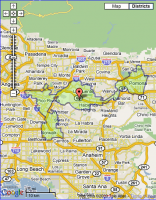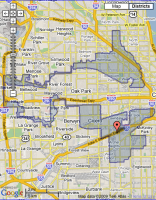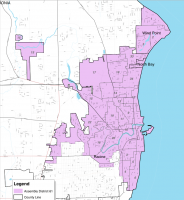Gerrymandering: Managed Democracy
Published by marco on
The article Of the Algorithms, by the Algorithms, for the Algorithms by Chris Wilson (Slate) discusses the U.S. state-of-the-art in redistricting theory. The art/science of districting involves designing electoral districts to optimize representation. On paper, this optimization is supposed to focus on representing the people in a particular district. In practice, instead of being dividing by geography, districts are divided by prevailing ideology in order to stabilize that district—make it “safe”, in the vernacular—for the current office holder and his or her party. Jockeying about district lines for political gain is called gerrymandering and is, on the books, illegal; in practice, however…things look quite different.
Instead of just going with proportional representation, where seats are assigned to parties based on the percentage of support they actually have in the population, U.S. political parties use these heavily manipulated districts to paint the picture of popular opinion with the colors most pleasing to the ruling party. Most of Europe uses the aforementioned proportional representation; they are at first mystified why the U.S. makes things so complicated, then appalled at the level of corruption with which we are willing to live and still dare call it a democracy.
The more aggregious examples are shown below:
 California's 38th (GovTrack.Us)
California's 38th (GovTrack.Us) Illinois's 4th (GovTrack.Us)
Illinois's 4th (GovTrack.Us) Maryland's 3rd (GovTrack.Us)
Maryland's 3rd (GovTrack.Us) New York's 28th (GovTrack.Us)
New York's 28th (GovTrack.Us)A common pattern in these cases is to stretch a thin slice of district across undesirable areas in order to attach a like-minded city a long distance away.Wisconsin’s 61st even goes so far as to include a completely non-contiguous—but clearly desirable—chunk of territory. California’s 38th and Illinois’s 4th both traipse through metropolitan areas, carefully picking and choosing those neighborhoods that are amenable to a particular viewpoint.
Some of these cases also nicely illustrate how gerrymandering can be used against an office-holder. Take the 4th in Illinois; it is likely that this district is overwhelmingly for the party of the current representative (say party (A)), but that isn’t a good thing. Imagine if the 4th and that the territory that it surrounds were apportioned into two halves instead of a concentric districts. That is, take the 4th and the territory it encloses, then split it horizontally into a top and bottom half instead. The overwhelming support for party (A) in the fourth would then be split more-or-less evenly between two districts (along the top of one and the bottom of the other), most likely swinging both districts for party (A).
Instead, the support for party (A) in the region is collected into the bizarre-looking 4th and conceded as a straight-out loss by party (B). The creamy filling at the center of the 4th, however, ends up going to party (B) because all of the supporters for party (A) have been gerrymandered into another district at the fringes. In this way, party (B) has carved out a new representative for itself where before there would have been two for party (A).
And that, kids, is what makes it such an illegal and abhorrent practice and why it’s an affront to democracy.
This just goes to show that the only way to maintain a thriving democracy is to call on Hercules and have him clean out the proverbial stables. Or as Thomas Jefferson once put it, “[a] little rebellion now and then… is a medicine necessary for the sound health of government.”[1]
In the case of Mr. Jefferson, it is difficult to select just one apt citation. The others are noted below:
↩“God forbid we should ever be twenty years without such a rebellion. […] And what country can preserve its liberties, if it’s rulers are not warned from time to time, that this people preserve the spirit of resistance? […] The tree of liberty must be refreshed from time to time, with the blood of patriots and tyrants. It is its natural manure.”


